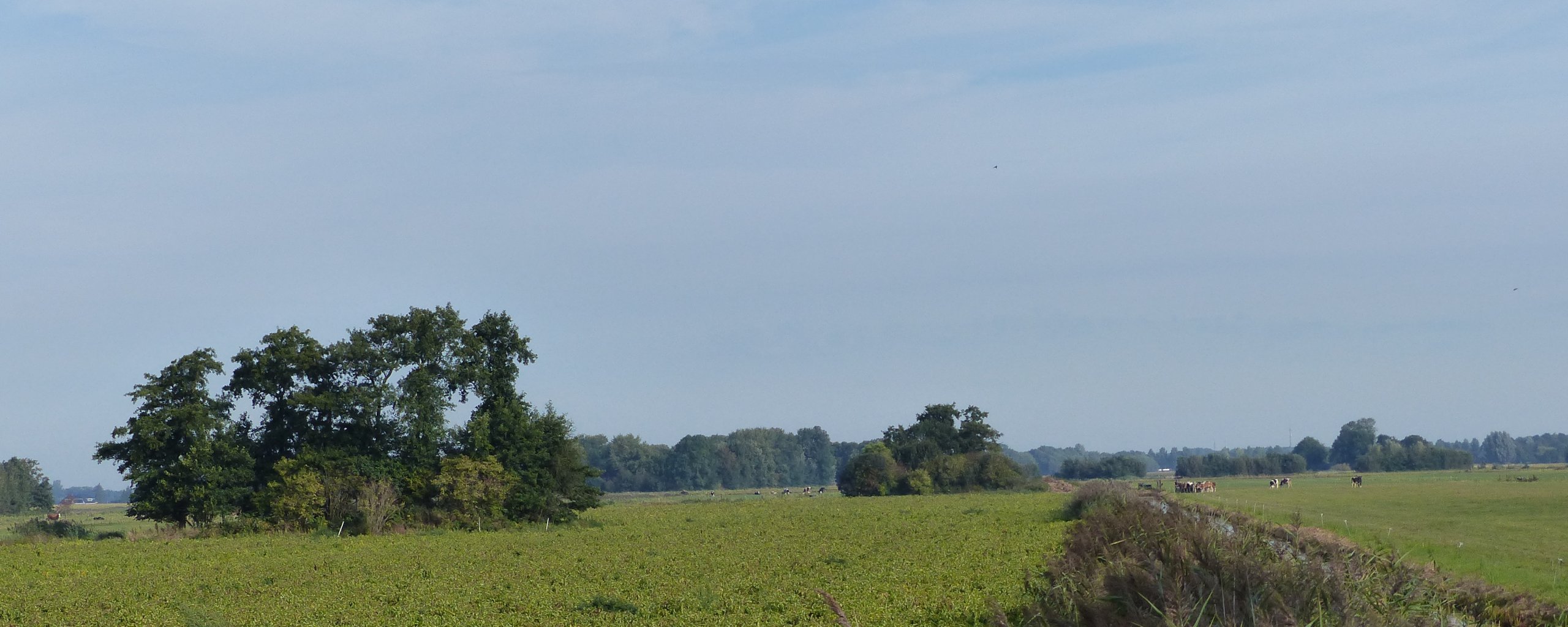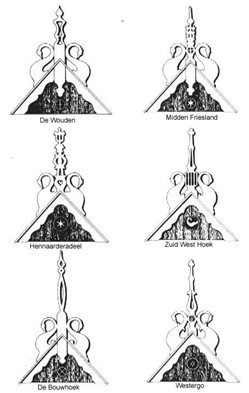
Ûleboerden: Heritage on the ridge
This time from the archives of Opsterland: a drawing of an ûleboerd. An owl sign is often visible on farms in Opsterland. Each region has its own type, symbolism and meaning. Within Fryslân, six types can be distinguished. In the building file of a farm on the Beetsterweg in Beetsterzwaag we find a drawn version of an owl sign from the Fryske Wâlden, intended for restoration.
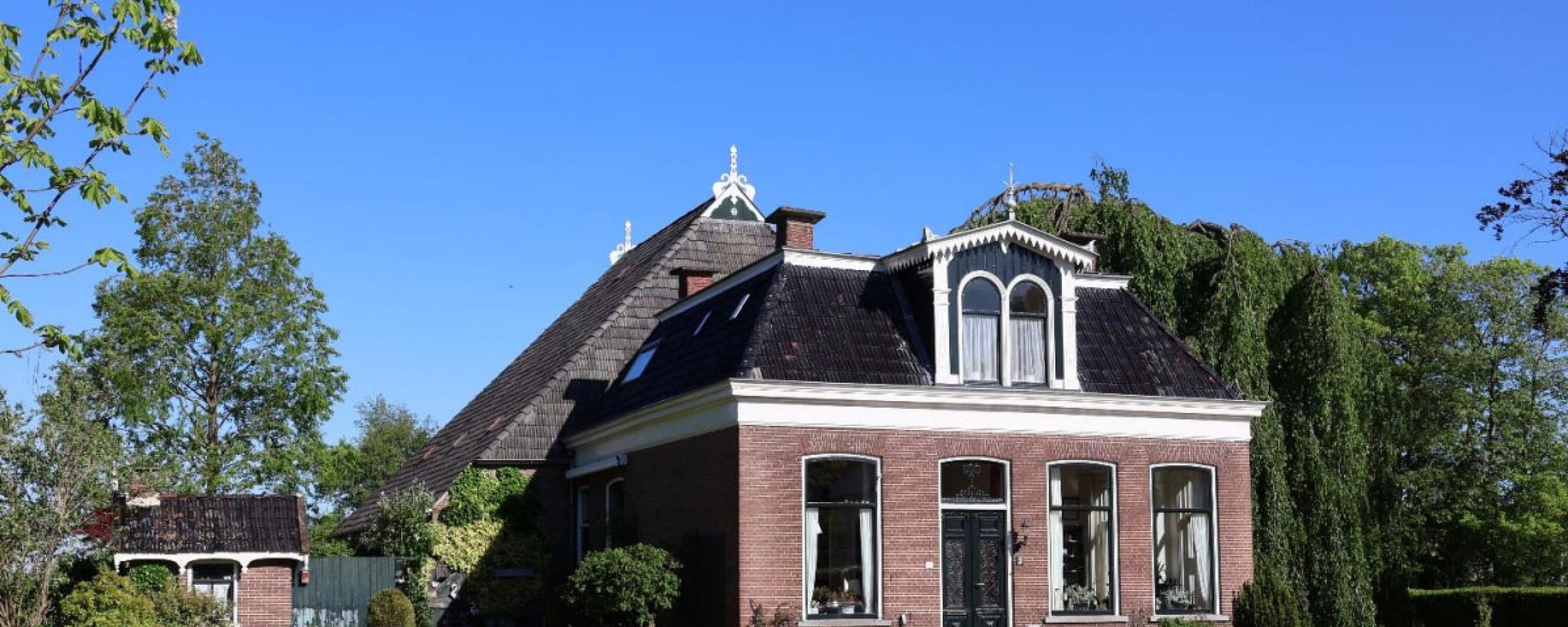

Function and use
Owl boards are decorative, triangular elements often found on old farmhouses, particularly on the ridge of a hipped roof. They often contain a round hole that served as an entrance hole for owls, which were welcome because of their role as mouse catchers. Today, this hole is often closed with a rosette or cross.
In addition to their decorative function, owl signs were also functional: they provided ventilation and prevented flooding from rain. In addition, they could carry symbolic meaning.
An owl sign consists of two main parts: the broker and - especially in Friesland - the knobbed swans with curved necks on either side of the broker. These swans are a typically Frisian tradition. The broker is the decorated beam in the middle. In the Fryske Wâlden it is often openwork, with the shape of a glass or chalice at the top and an hourglass at the bottom. Besides the variant with swans, there are also more sober versions.
Origin
The first owl signs possibly originated around 1500, when a new type of farm - with barn - made its appearance in Fryslân. The oldest known archival mention of an owl sign in the Netherlands is a bill from 1669 from a carpenter. Around 1750, owl signs also acquired a communicative function: the color could indicate, for example, whether the farm was a tenant farm or an ownership farm. They could also indicate the owner's right to vote, for example in village meetings or when using common land.
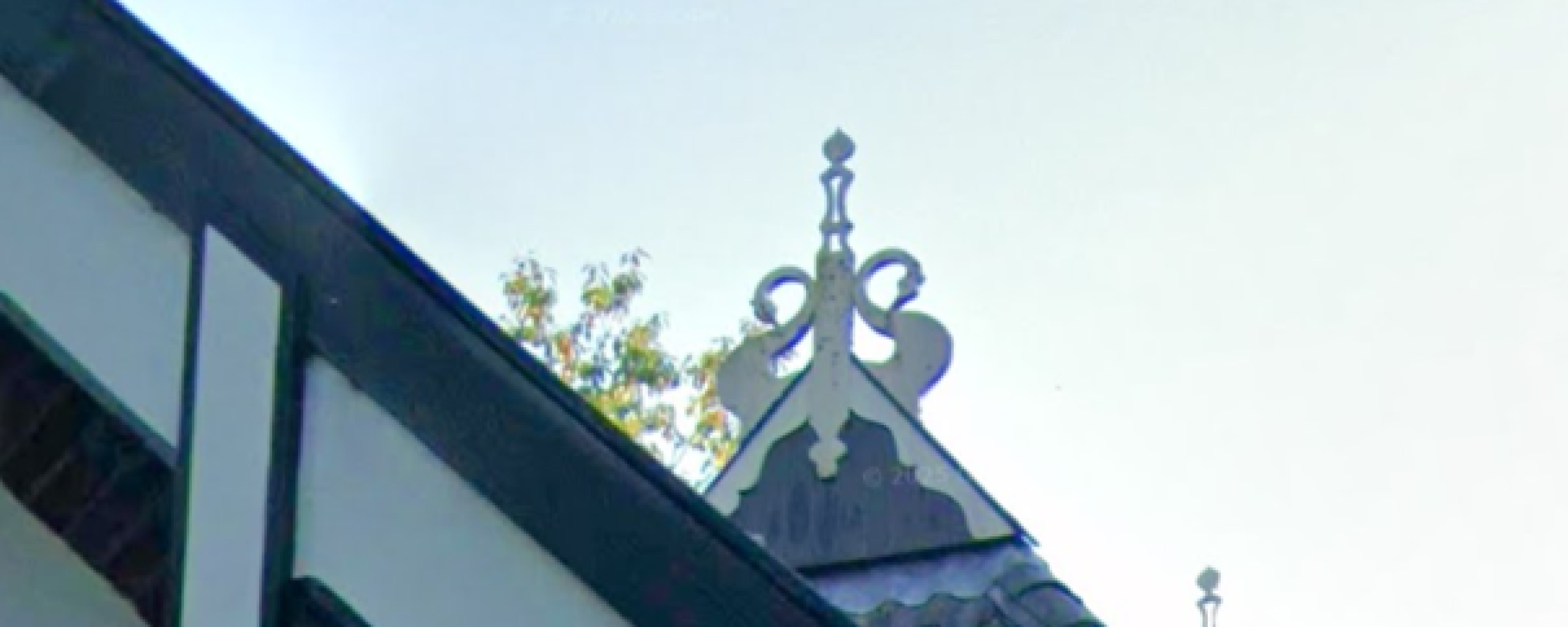
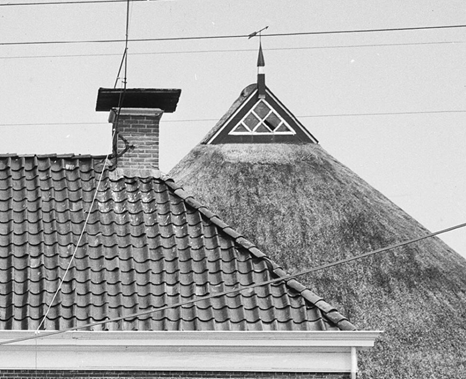
Symbolism and superstition
A mythical significance was often attributed to the broker. Various symbols were visible, often drawn from European folk art. Researcher Klaas Sierksema collected some 150 different decorations in the 1930s.
Examples include:
- Zonnerad: tribute to the sun god (paganism)
- Clover three: happiness
- Crescent moon: fertility
- Grid or harp: ownership of the land
- Tulip: hope
- Two palm branches: peace
- Ash (tree of life): life
- Hourglass: impermanence
The swans possibly refer to Christian symbolism, such as charity or fidelity. According to linguist Joost Hiddes Halbertsma (1789-1869), the swan necks symbolize the right of a nobleman or heiress to keep swans around his castle. The Frisian folk writer Waling Dijkstra (1821-1914) endorsed this interpretation.
Medieval origins?
Although owl signs with swans in their present form probably became common around 500 years ago, the symbolism may go back much further. Swan necks were found on ships and homes in the original Frisian area (from Utrecht to parts of Denmark). They served as a means of defense against evil. As a facade symbol, they were used possibly as early as the thirteenth century, for example attached to a wind feather. Today the superstition has disappeared, but the symbolism lives on as a decorative element in architecture.
Image gallery
